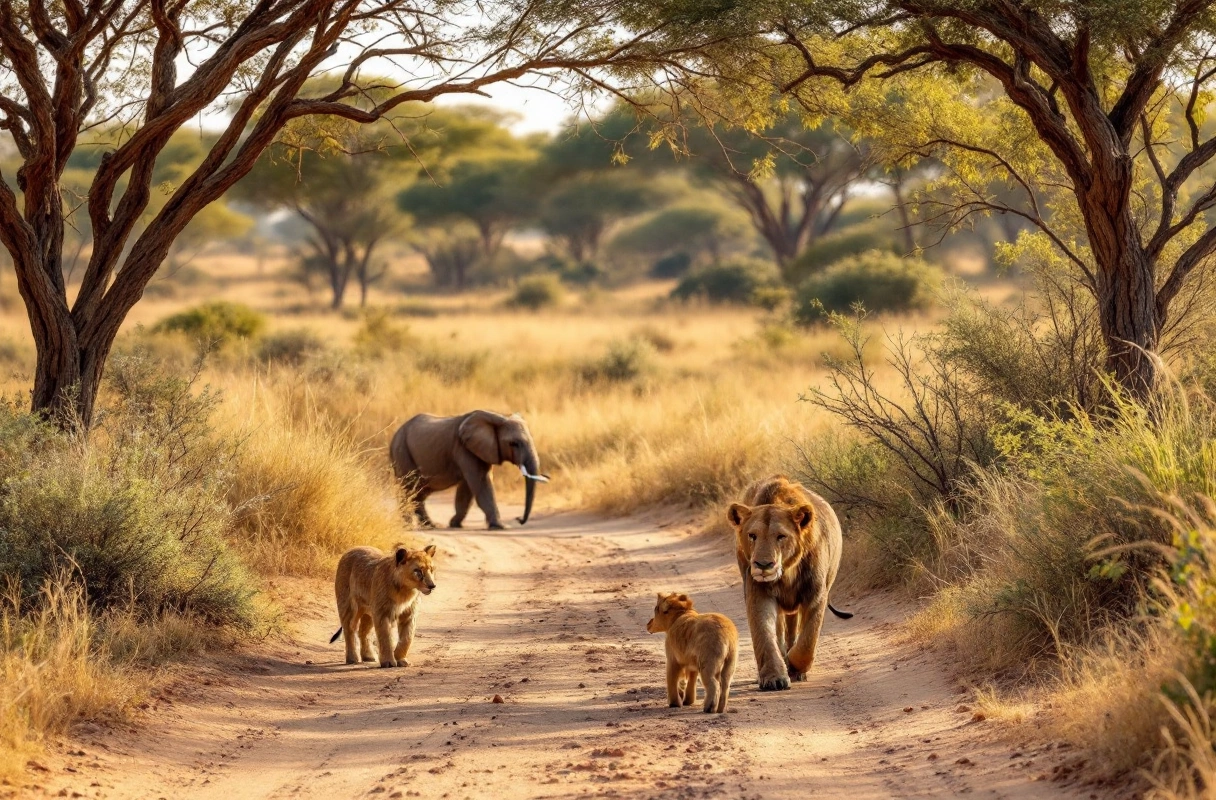
Capturing the majestic beauty of African animals in their natural habitat is a dream for many wildlife photographers. The diverse landscapes and rich biodiversity of Africa present unique opportunities to witness and document some of the world's most iconic species. However, photographing these creatures effectively requires not only technical skills but also an understanding of their behavior, habitats, and the best times to observe them. In this article, we will explore expert tips for photographing African animals, delve into the best times of year to see wildlife in Africa, and provide valuable insights to enhance your wildlife experiences.

To successfully photograph African animals, it is essential to first understand their habitats and behaviors. Africa boasts a variety of ecosystems, each supporting different species. From the vast savannas of the Serengeti to the dense jungles of the Congo, knowing where to find specific animals will significantly improve your chances of capturing stunning images.
Africa's ecosystems can be broadly categorized into several types:
Understanding these ecosystems will help you plan your photography sessions effectively, allowing you to focus on specific animals and their preferred environments.
African animals exhibit various behaviors and movement patterns that influence the best times for photography. For instance:
By studying these behaviors, you can better anticipate when and where to photograph African animals, enhancing your chances of getting that perfect shot.

Timing is crucial for wildlife photography. Different seasons bring varying opportunities for observing and photographing African animals. Here, we will explore the best times of year to plan your wildlife experiences.
Dry Season (June to October):
Wet Season (November to May):
Migration Period (July to September):
When planning your wildlife photography trip, consider the local climate of your chosen destination. For instance:
Researching local weather patterns can help you select the optimal time for your photography adventure.

Having the right equipment can make a significant difference in the quality of your wildlife images. Here are some essential gear recommendations for photographing African animals effectively.
To elevate your wildlife photography skills, consider the following practical tips that can help you capture breathtaking images of African animals.
Wildlife photography requires patience. Spend time observing animal behavior before raising your camera. This approach allows you to anticipate movements and capture more natural interactions.
Natural light can enhance the quality of your photographs. The golden hours—early morning and late afternoon—provide soft, warm light that can make your images pop. Avoid harsh midday sunlight, which can create unflattering shadows and highlights.
Always prioritize the well-being of the animals you are photographing. Maintain a safe distance, avoid disturbing their natural behavior, and adhere to local regulations. Ethical wildlife photography not only protects the animals but also enhances the authenticity of your images.
Even seasoned photographers can make mistakes when photographing wildlife. Here are some common pitfalls to avoid.
A busy or distracting background can detract from the subject of your photograph. Pay attention to your surroundings and reposition yourself if necessary to create a cleaner composition.
Wildlife can be unpredictable, and moments of action can occur suddenly. Always be ready to shoot by keeping your camera settings optimized for fast-moving subjects. Familiarize yourself with your camera's settings so you can react quickly.
Wildlife photography comes with a responsibility to respect animals and their habitats. Avoid chasing or cornering animals for the perfect shot, and always maintain a safe distance.
Utilizing local guides can significantly enhance your wildlife photography experience. They possess valuable knowledge about animal behavior, migration patterns, and the best locations for sightings. Here are some benefits of hiring a local guide:
Photographing African animals in the wild is an adventure that requires preparation, patience, and a deep appreciation for nature. By understanding animal behavior, choosing the right time and place, and utilizing proper techniques and equipment, you can capture stunning images that tell the story of Africa's incredible wildlife.
As you embark on your journey to photograph African animals, remember that there is a wealth of knowledge to gain about these magnificent creatures and their ecosystems. The Banana Slug Club is dedicated to fostering curiosity and learning about nature, science, and wildlife. Conservation efforts can provide valuable insights and educational opportunities.
We invite you to visit our website to discover more about wildlife photography, African animals, and the natural world. Join our community of nature lovers and expand your knowledge while enjoying the beauty of wildlife experiences.
Get free resources, early access to new features and updates.
No spam. Just fun educational emails!